«In preparing a history of the Museum's Department of Asian Art, which this year celebrates its centennial by showcasing its unparalleled collection through a range of exhibitions, gallery talks, and other offerings, I have uncovered a number of little-known facts and many "secrets" that are not widely known to the public. Here are nine of the most fascinating.»
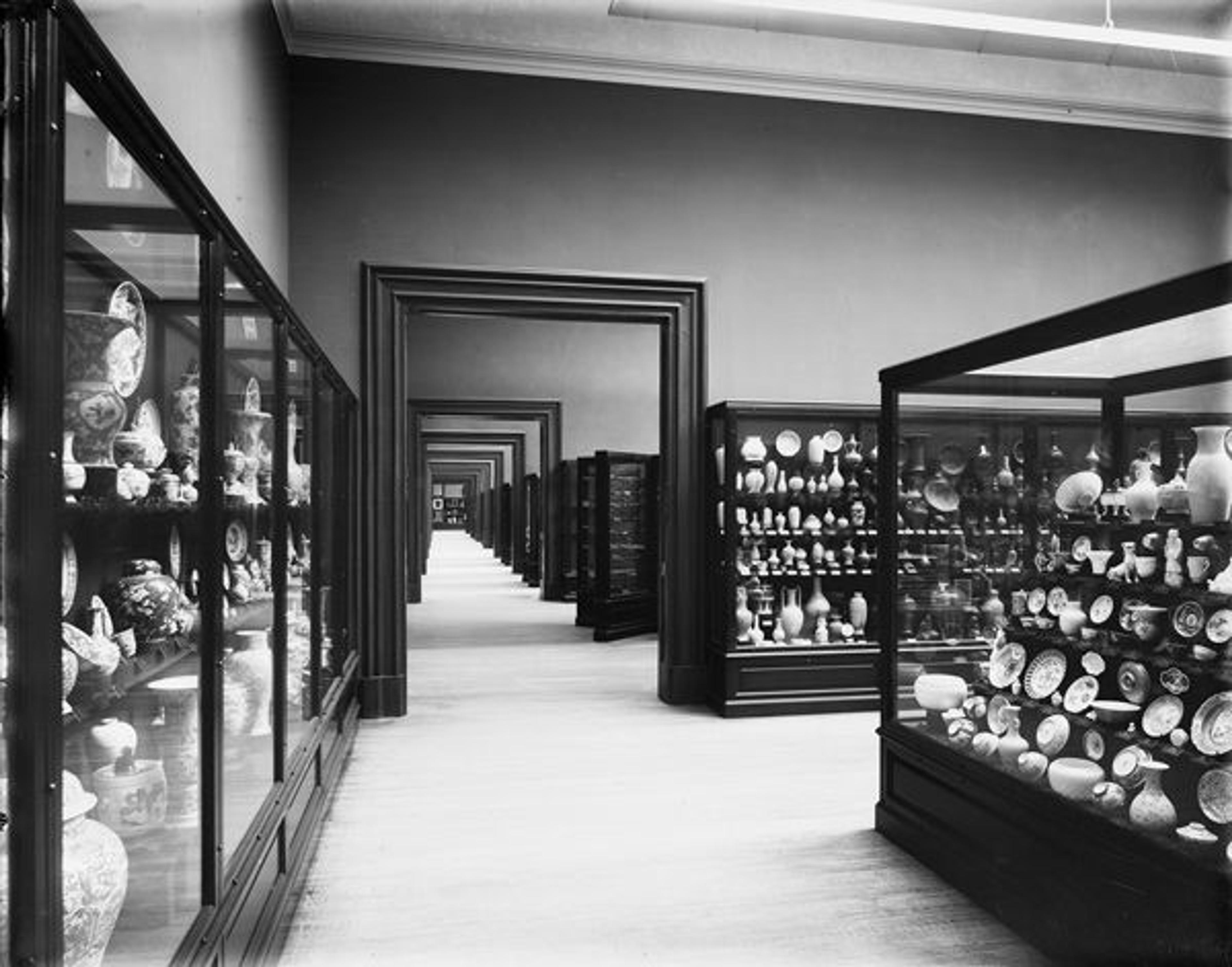
The Avery Collection of Chinese Porcelains (now galleries 612–619 in the Department of European Paintings). Photographed ca. 1907
1. For the first forty-five years of the Museum's history (1870–1915), there was no separate department for the arts of Asia—it was all part of the Department of Decorative Arts.
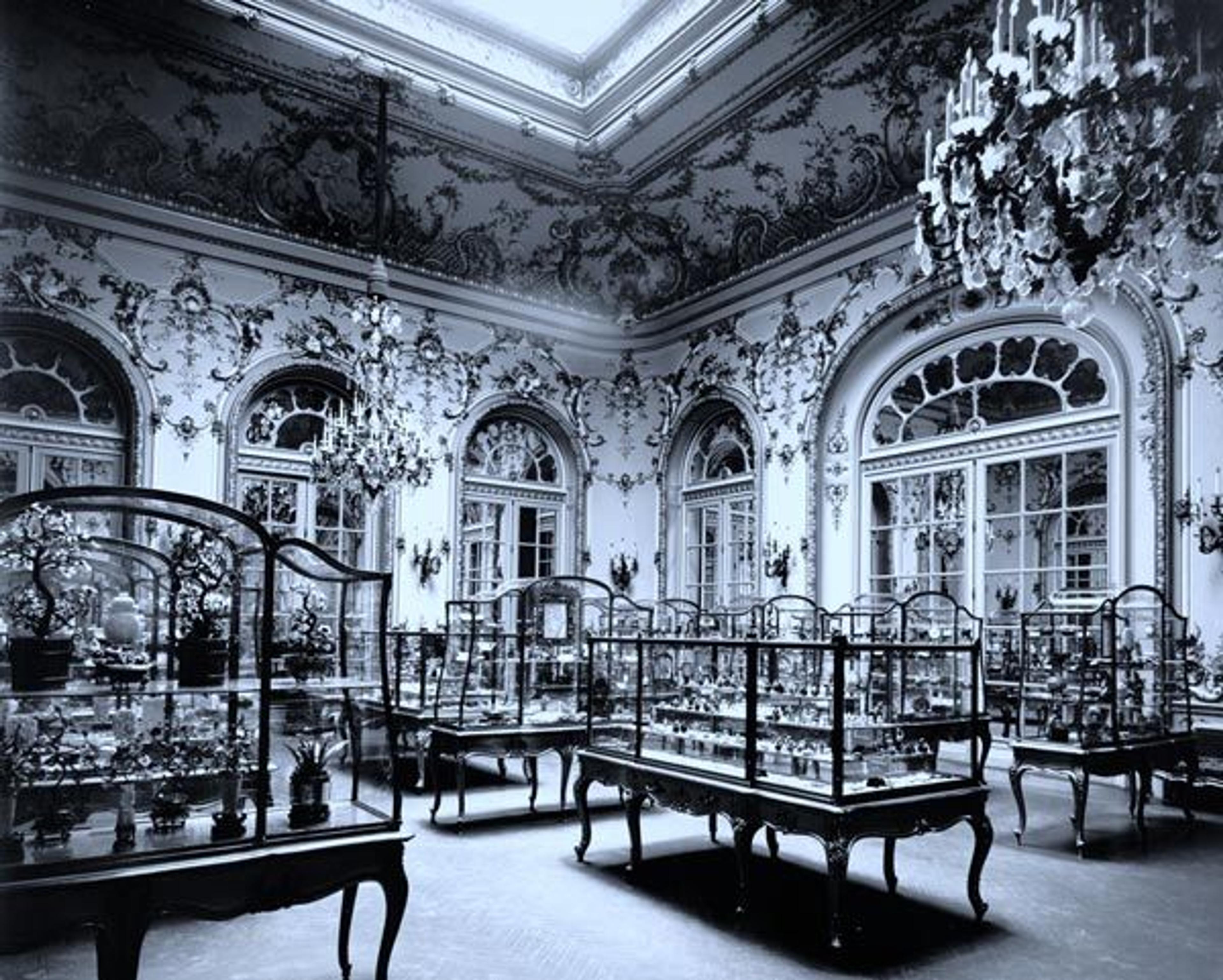
The Heber Bishop jade collection (now gallery 206). Photographed in 1903
2. In keeping with the Gilded Age's fascination with European royal taste, many nineteenth-century American collectors developed a passion for chinoiserie and japonisme that led them to focus on the decorative and applied arts—including ceramics, lacquer, metalwork, and textiles. No collector better demonstrated the allure of European styles than Heber R. Bishop, who not only left his entire collection of jades to the Met, but presented the Museum with funds to house it in a replica of his own Louis XV–style ballroom. It was not until the 1930s that the jades were presented in a more culturally neutral manner.
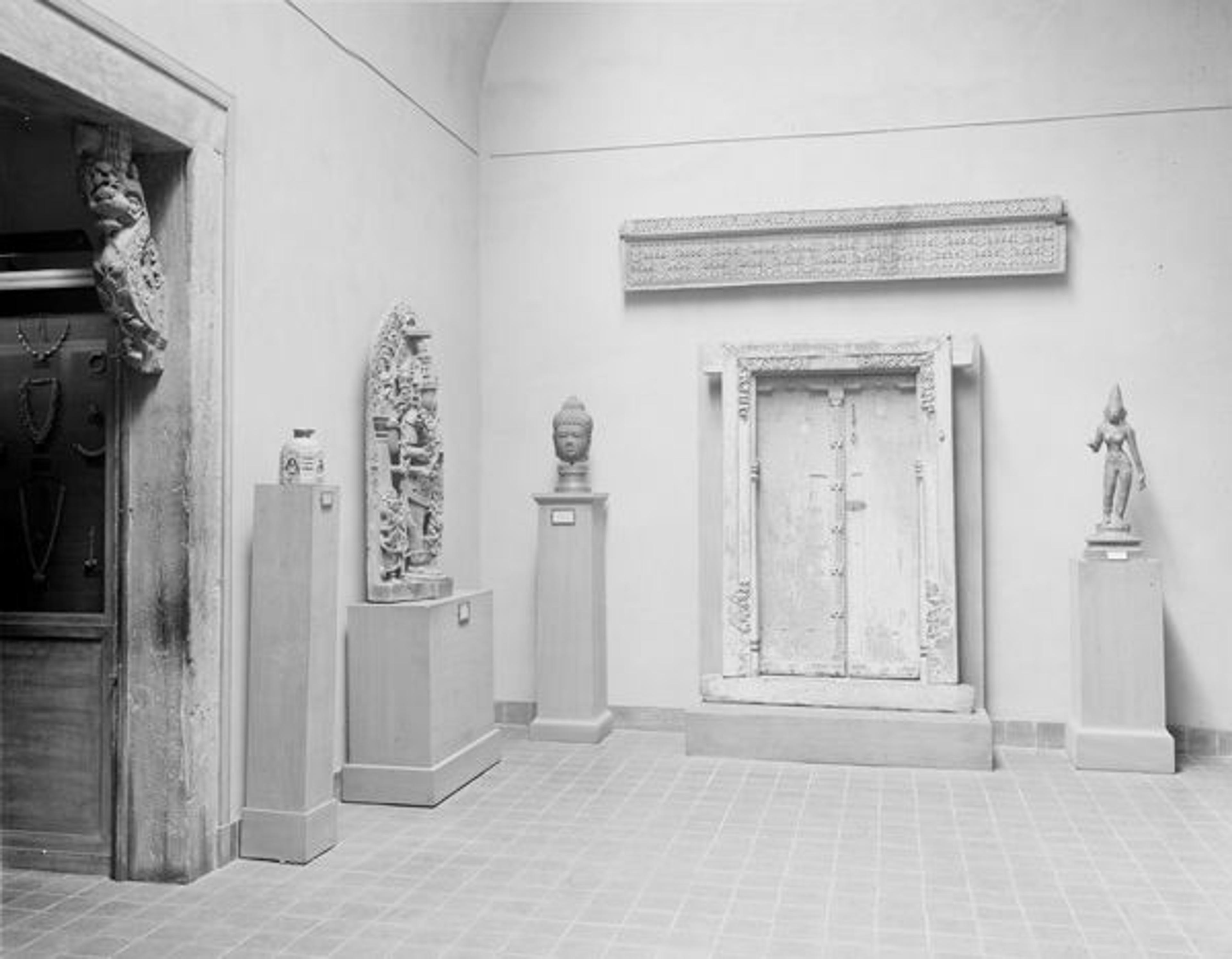
Indian sculpture display (now gallery 207). Photographed April 14, 1921
3. When it was founded in 1915, the department was originally called "Far Eastern Art." Indian art was housed with Islamic and Near Eastern artworks until 1932.
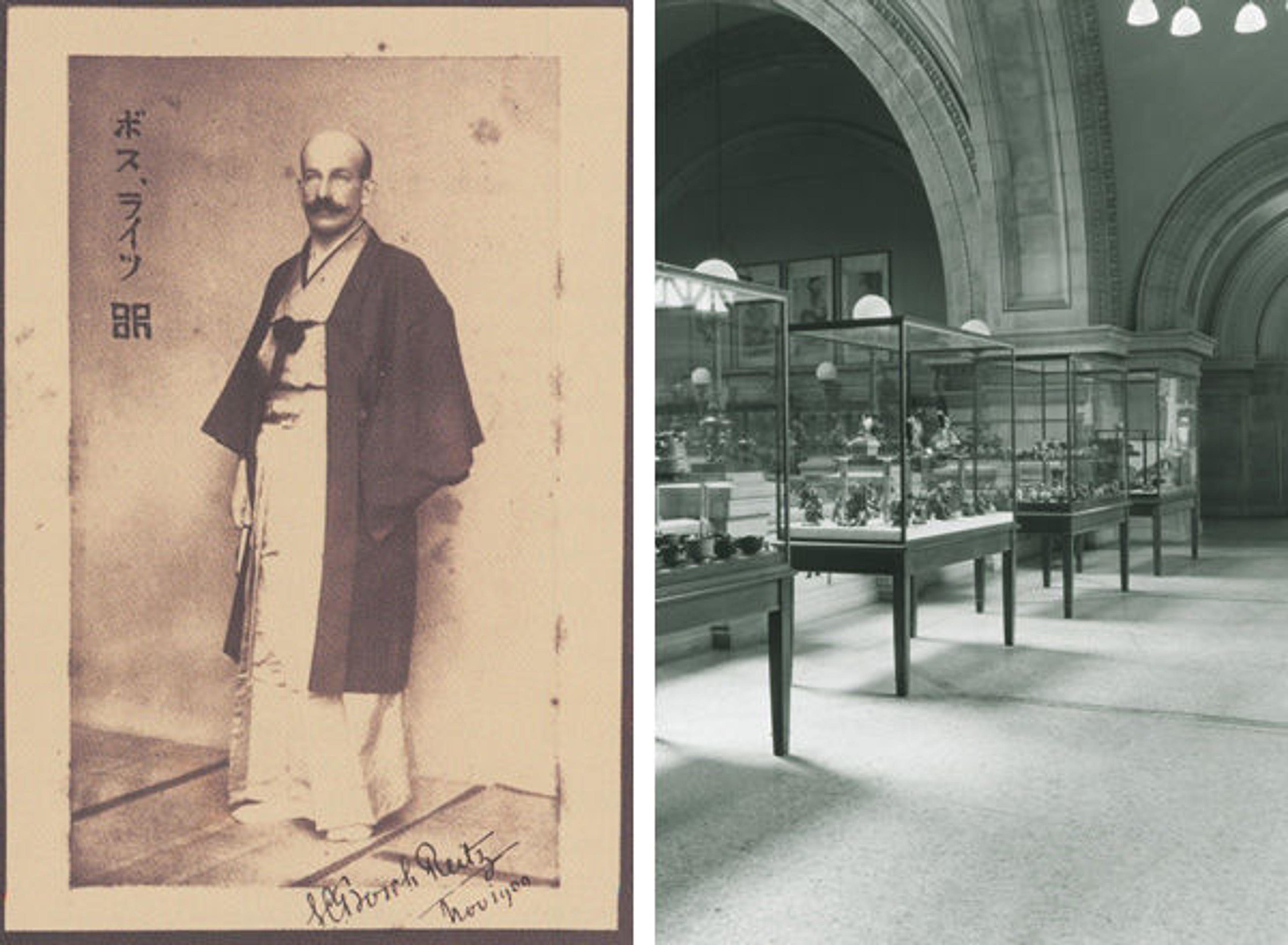
Left: Sigisbert Chretien Bosch Reitz. Photographed in Japan, 1900. Right: The earliest space dedicated to "Far Eastern Art" was the Great Hall Balcony (now gallery 202). Photographed in 1933
4. World War I influenced the choice of the Met's first curator of Far Eastern Art. Siqisbert Chretien Bosch Reitz (1860–1938) was a Dutch artist who trained as a painter in Munich and Paris before traveling to Japan in 1900, where he studied woodblock printing. In 1914 he was invited to curate the Asian collection at the Louvre, but due to the War, he left for America. In June 1915, he was engaged as the first curator of the newly created Department of Far Eastern Art, "with responsibilities for China, Japan, Korea, and Tibet, but not India," and with "the collection to be installed in the big gallery surrounding the Fifth Avenue entrance" (New York Evening World, June 19, 1915).
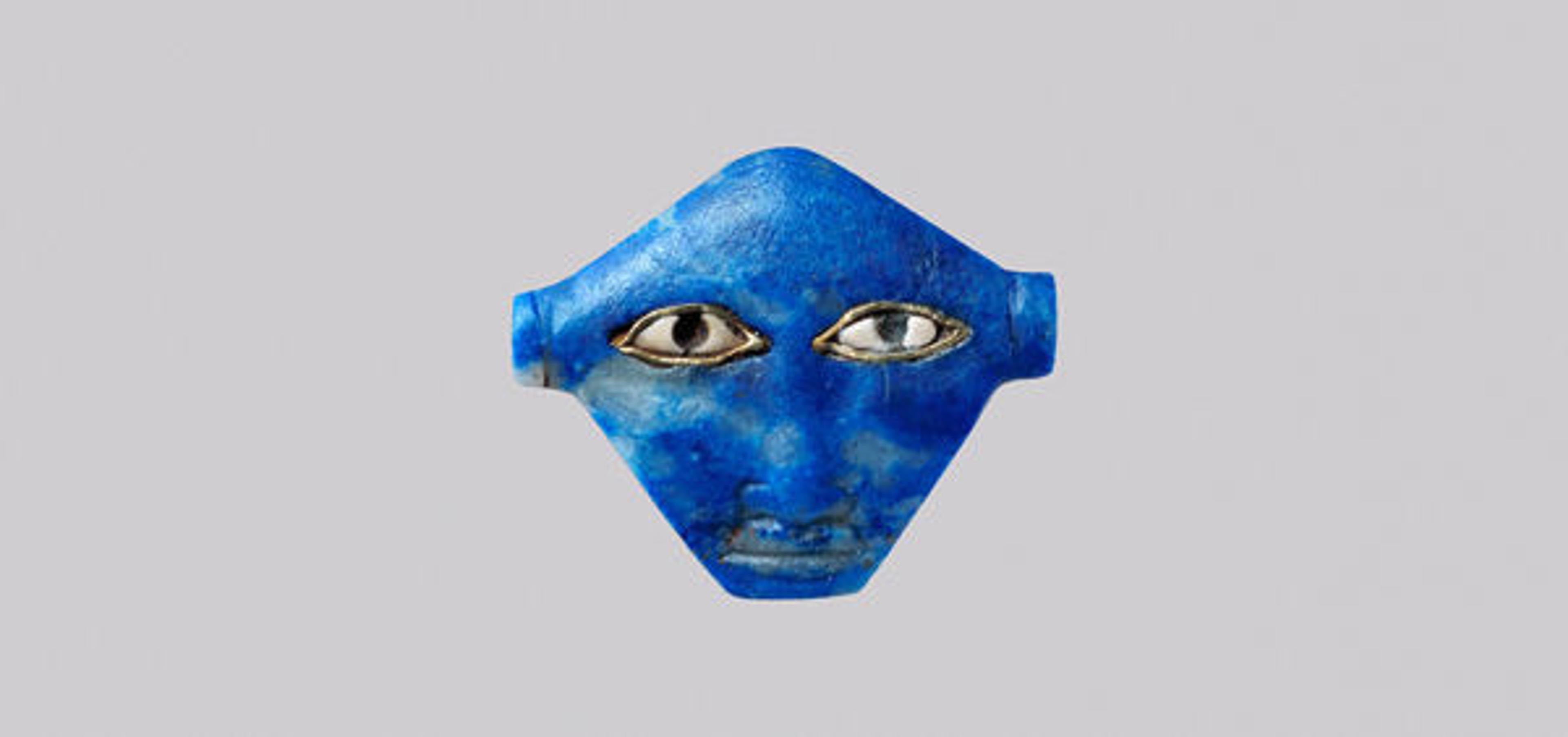
Face of the goddess Hathor. Late New Kingdom–Third Intermediate Period. 12th Dynasty, ca. 1295-664 B.C. Lapis lazuli, gold, travertine (Egyptian alabaster); H. 1.2 cm (1/2 in); W. 1.4 (9/16 in); Th. 0.2 cm (1/16 in). The Metropolitan Museum of Art, New York, Purchase, Lila Acheson Wallace Gift, 2012 (2012.178)
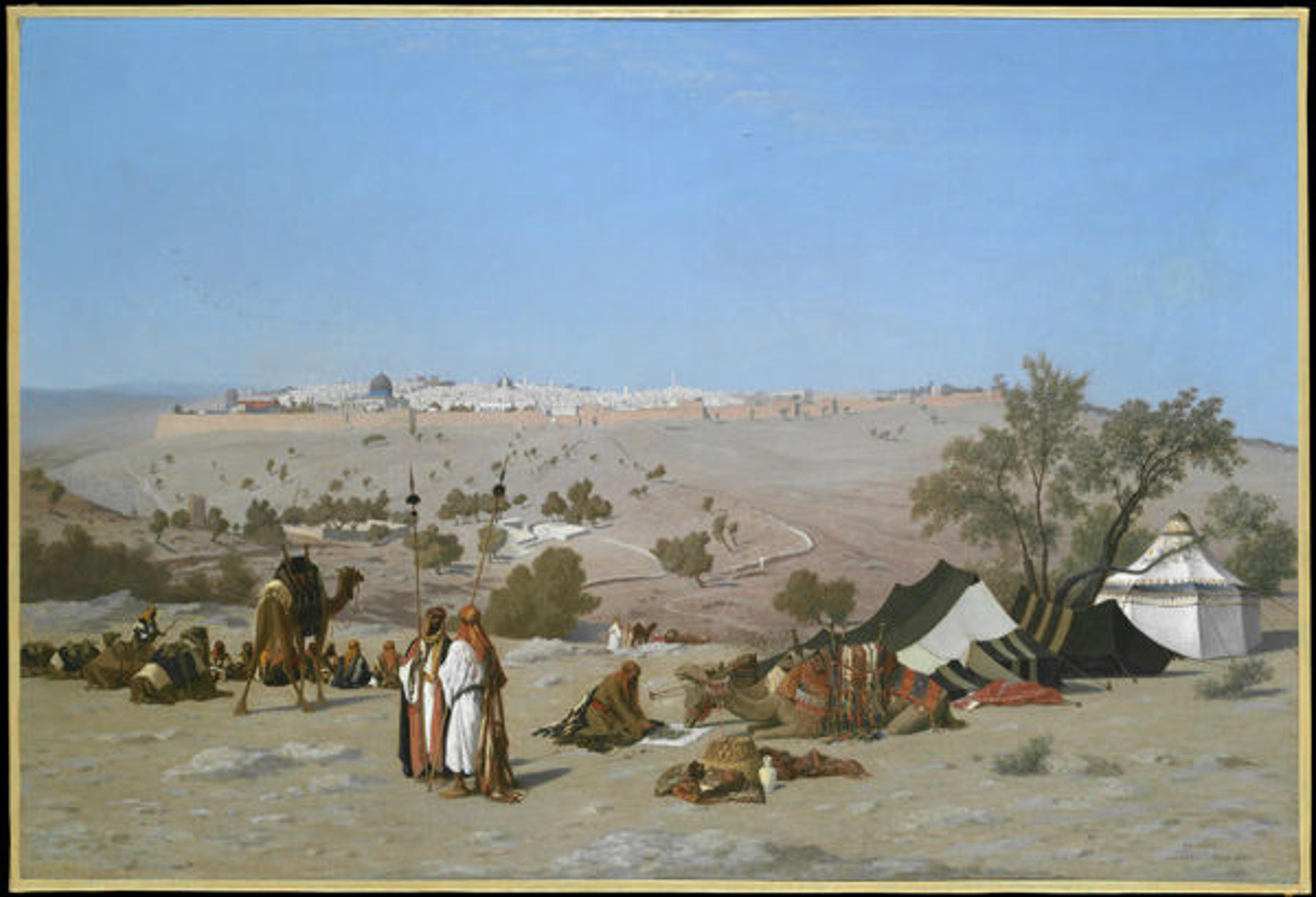
Charles-Théodore Frère (French, 1814–1888). Jerusalem from the Environs, possibly 1881. Oil on canvas; 29 1/2 x 43 1/2 in. (74.9 x 110.5 cm). The Metropolitan Museum of Art, New York, Catharine Lorillard Wolfe Collection, Bequest of Catharine Lorillard Wolfe, 1887 (87.15.106)
5. Every one of the Met's seventeen curatorial departments holds works of art made in Asia, including pieces of lapis lazuli from Afghanistan in the Department of Egyptian Art and European paintings created by artists traveling in Asia.
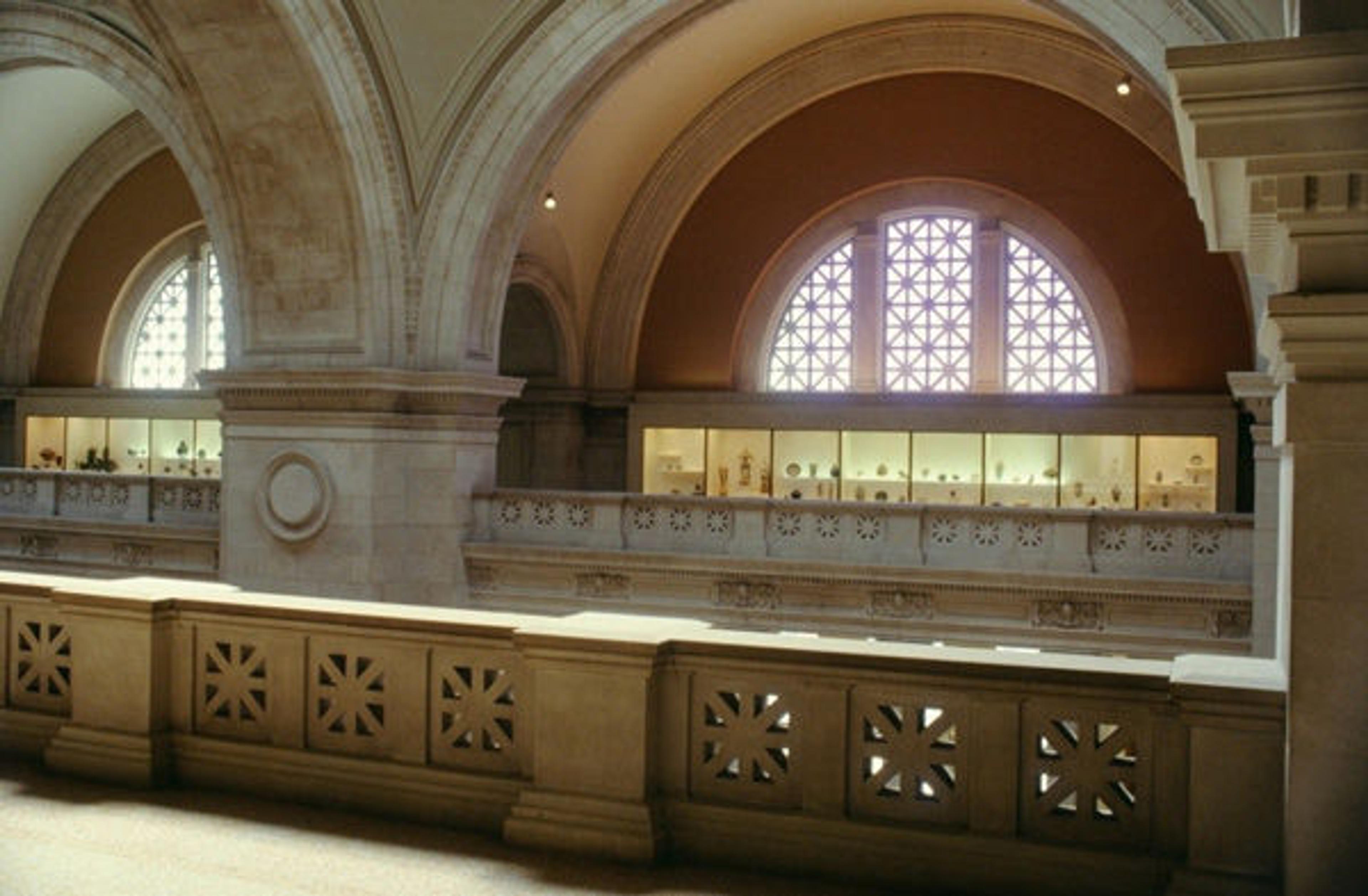
The Great Hall Balcony display of Chinese ceramics (gallery 202). Photographed in the 1970s
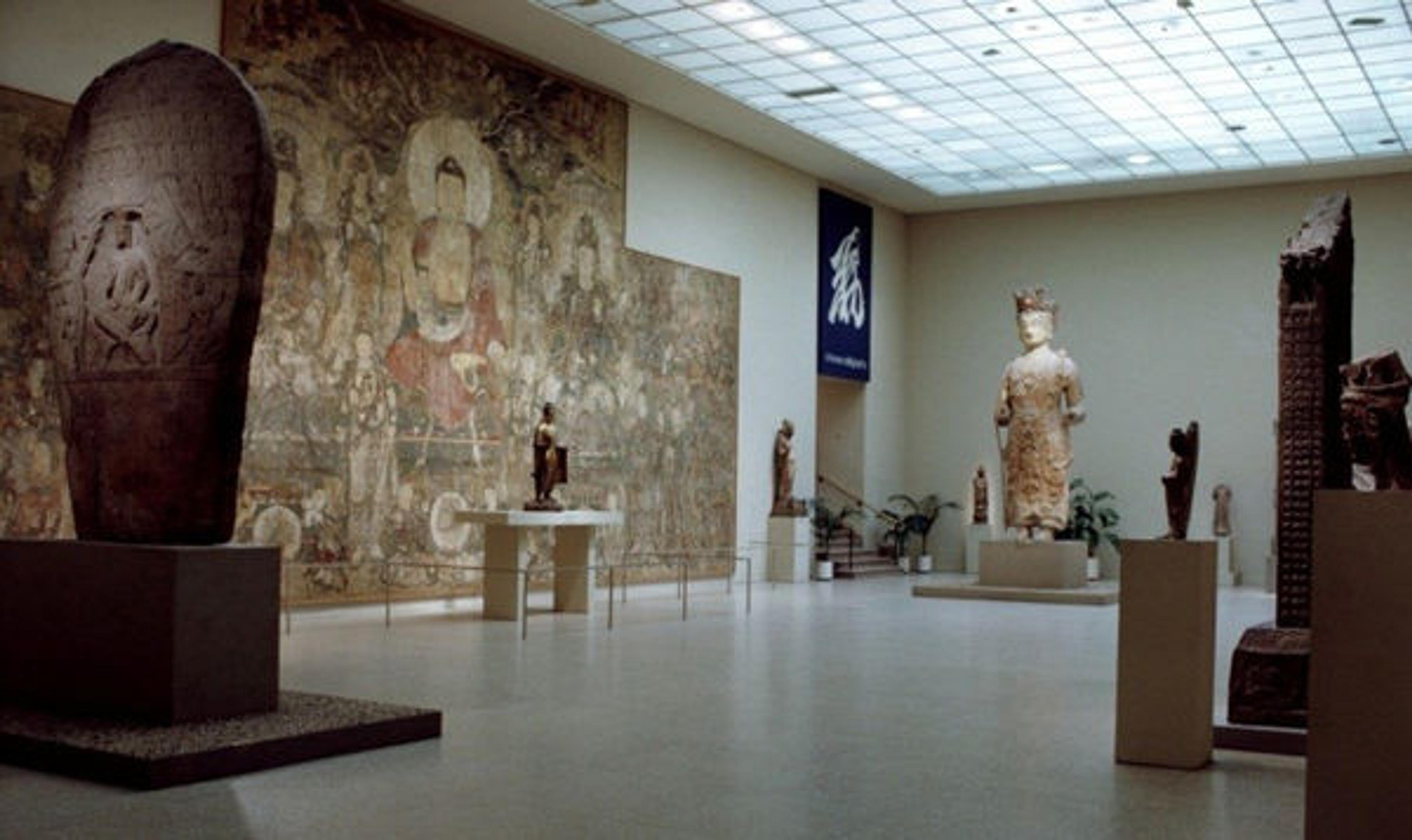
The Arthur M. Sackler Gallery (gallery 206) with a sign for the 1972 exhibition Chinese Calligraphy: 3,000 Years of Art of the Brush. Photographed in 1972
6. When the Met celebrated its centennial in 1970, it was determined that the Department of Asian Art was the weakest curatorial department in terms of staff, galleries, and collection, thus raising the question as to whether or not the Museum should continue to collect in that area. The only Asian art on view at the time was the ceramics around the Great Hall Balcony and the Arthur M. Sackler Gallery of early Chinese Buddhist art. In the background of the image above, you can make out a sign at the entrance to the 1972 exhibition Chinese Calligraphy: 3,000 Years of Art of the Brush, a loan show organized by the Philadelphia Museum of Art that was the first exhibition I worked on at the Met.

Chinese Treasury (gallery 219). Photographed in 2014
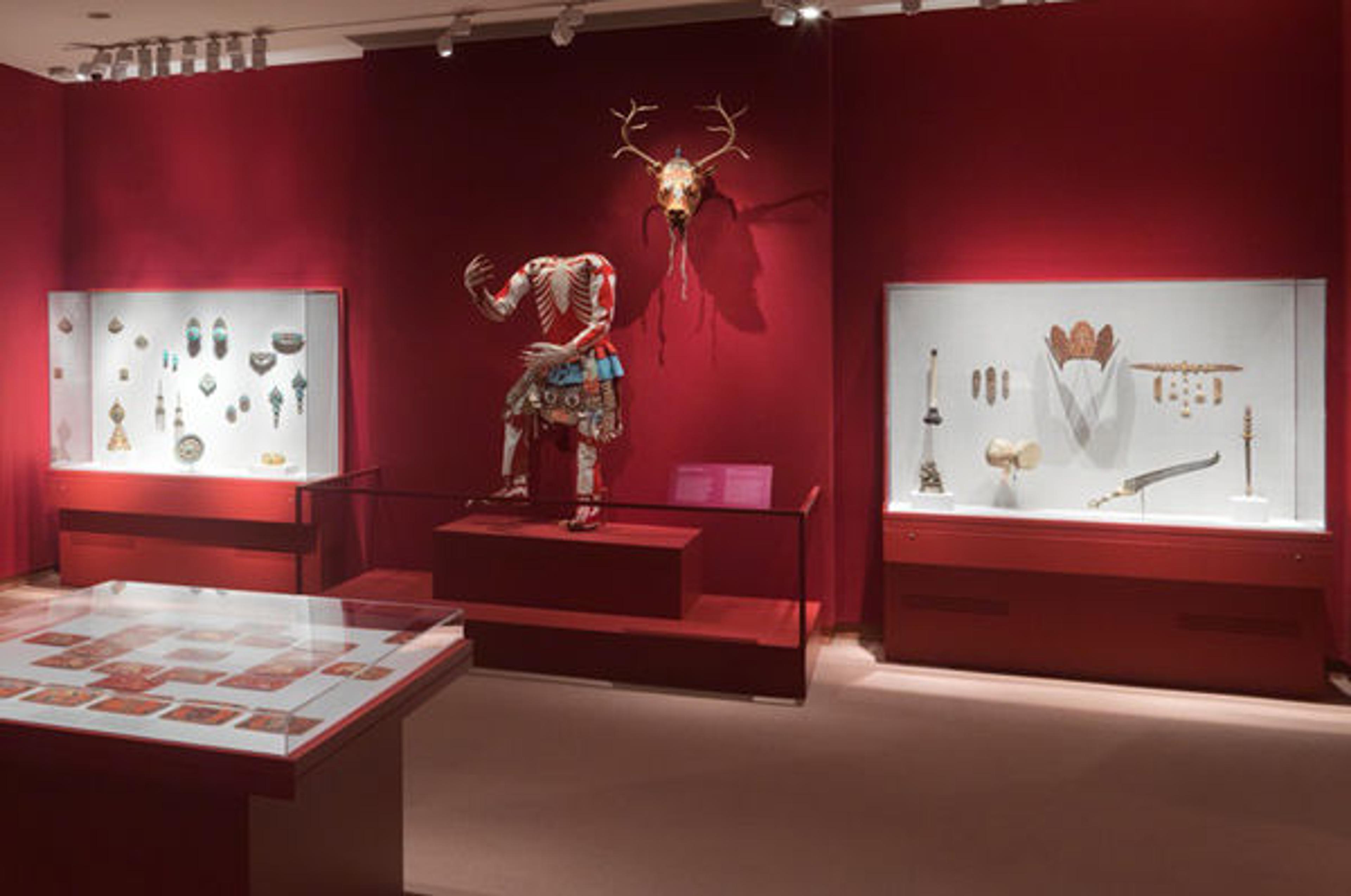
The special exhibition Sacred Traditions of the Himalayas, on view through June 14, 2015, in gallery 251. Photographed in 2014
7. The Asian Art galleries feature not one but two "third floors." On one you will find one of the world's most extensive concentrations of Chinese jade, which came to the Met in 1902, an unparalleled array of lacquer and textiles, and a Chinese treasury filled with exquisite small-scale objects. On the other, you will ascend beyond an intricate Jain temple ceiling to a changing exhibition space which currently features one of the most important arrays of art from the "Roof of the World"—painting, sculpture, and jewelry from Nepal and Tibet, now on view in Sacred Traditions of the Himalayas.
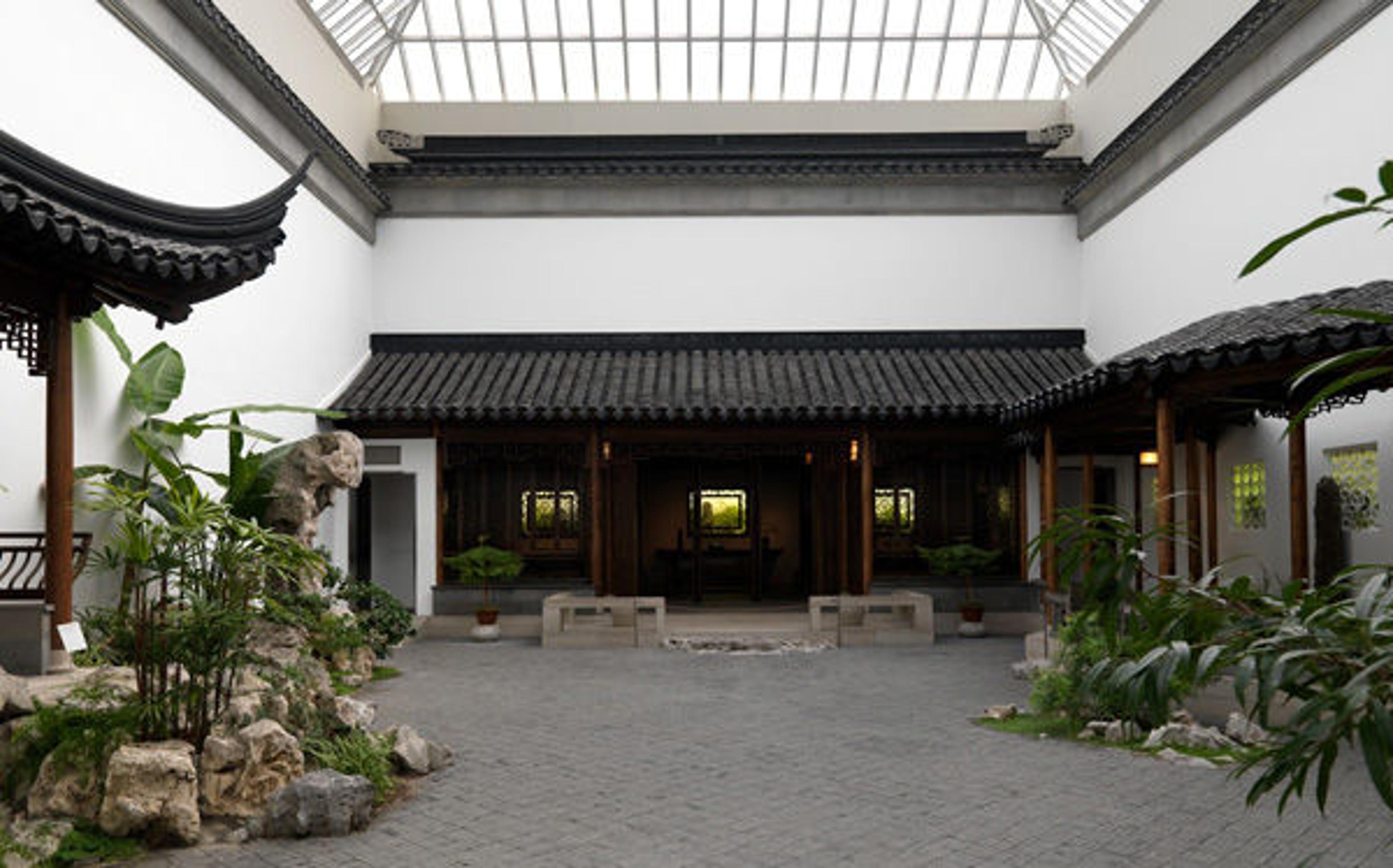
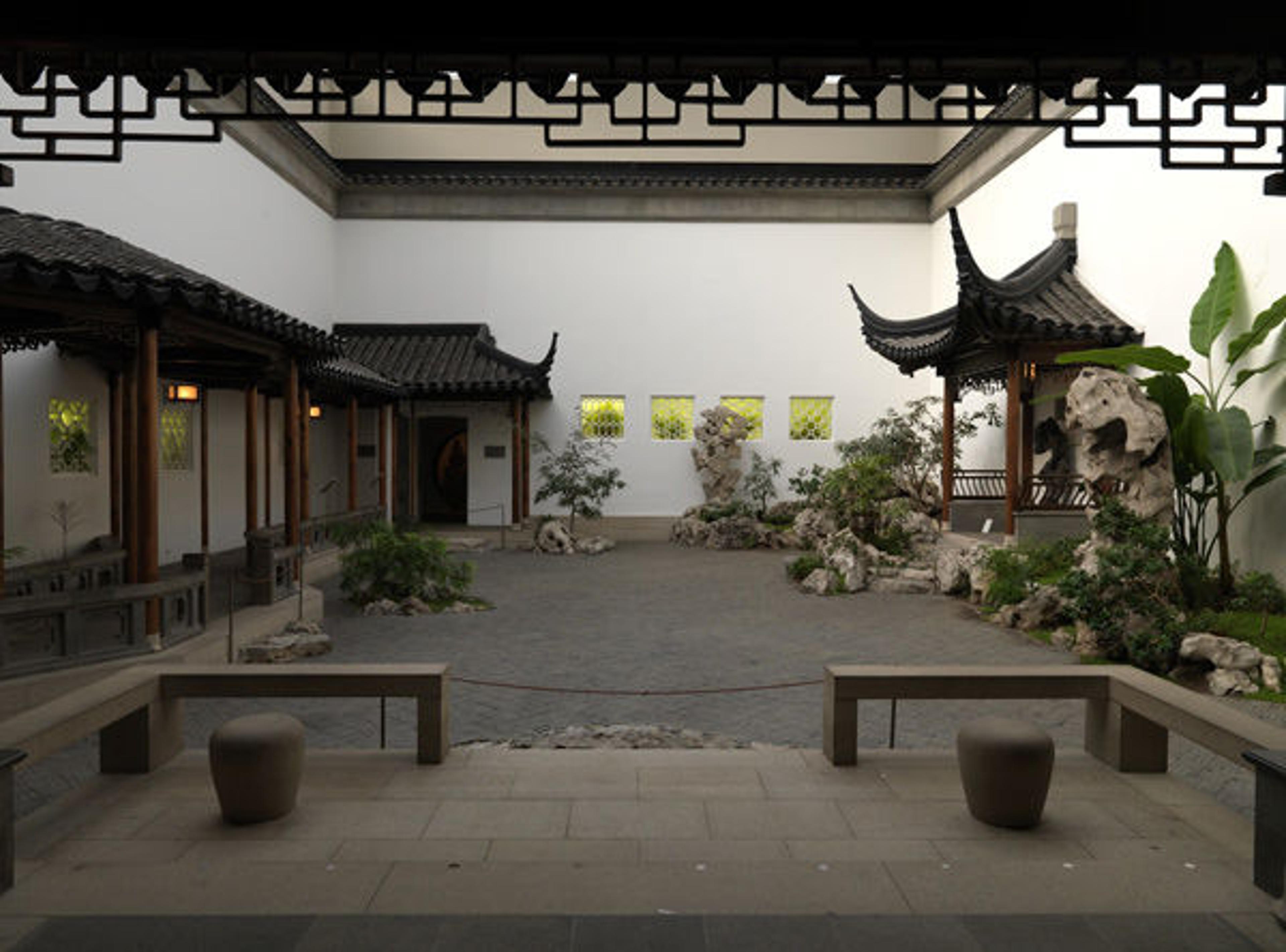
Two views of the Astor Court, gallery 217. Photographed in 1980
8. The Met's collection includes the first example of a Chinese garden created outside of China. Occupying a space that was once a light well to the Egyptian galleries, twenty-five workmen and a chef lived and worked in New York for five months to assemble the Astor Court from hand-crafted elements of wood, ceramic, and stone. The garden court and the adjacent Ming Hall were created to provide a period setting for a suite of Chinese hardwood furniture acquired with Brooke Russell Astor's help in 1975. These spaces opened in 1981 with twenty-six goldfish in the pond—one for each workman—brought from their hometown of Suzhou.
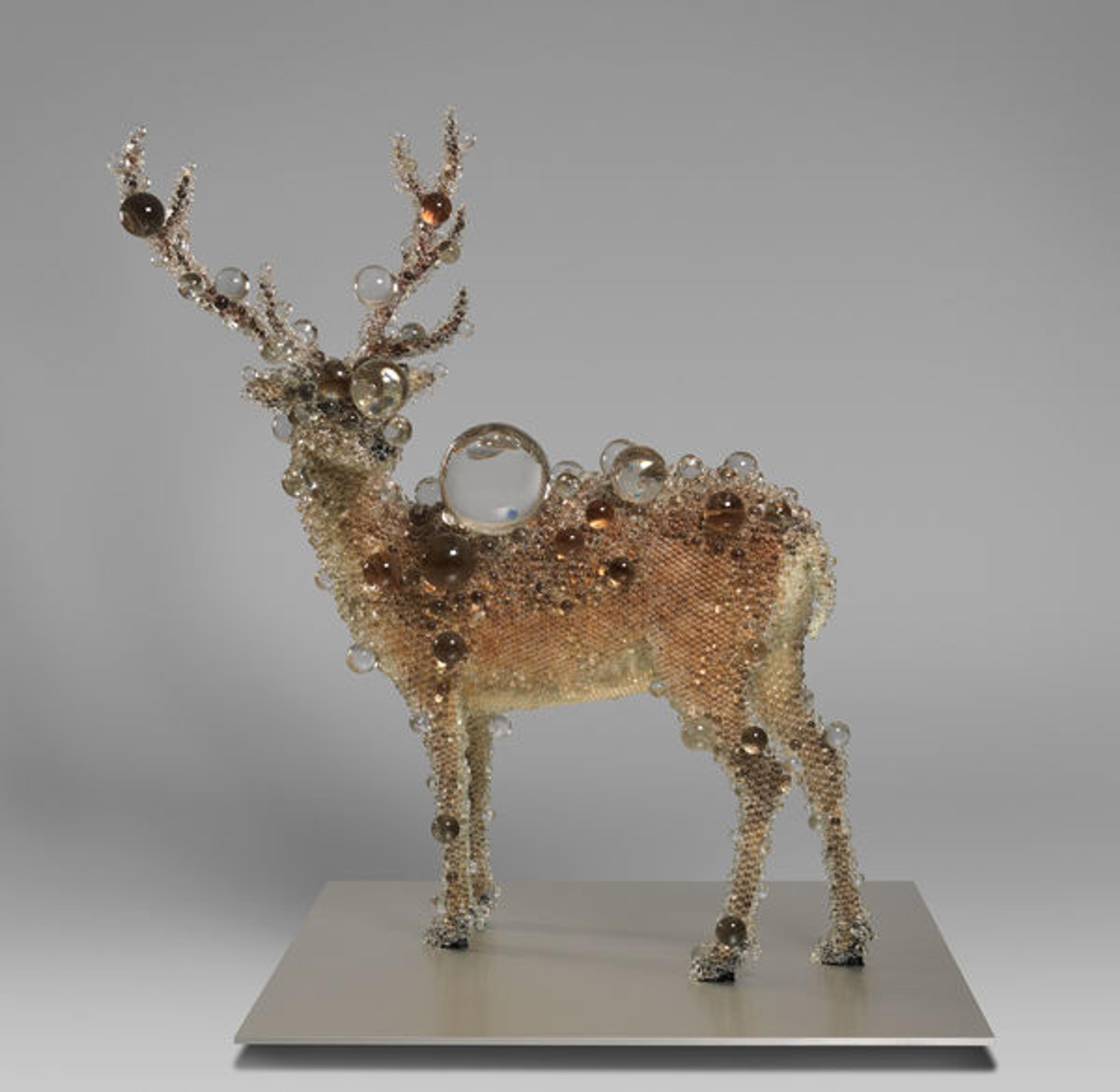
Kohei Nawa (Japanese, born 1975). PixCell-Deer #24, 2011. Mixed media; taxidermied deer with artificial crystal glass; H. 80 11/16 in. (205 cm); W. 59 1/16 in. (150 cm); D. 78 3/4 in. (200 cm). The Metropolitan Museum of Art, New York, Purchase, Acquisitions Fund and Peggy and Richard M. Danziger Gift, 2011 (2011.493a–j) © Kohei Nawa
9. The Museum's Asian art collection encompasses "half the world and all of time" and features artworks that range in date from the prehistoric era until now—including a contemporary artwork that features a deer nicknamed "Bubbles."
Related Link
The Met Asian Art Centennial 2015
Now at the Met: Blog posts related to Sacred Traditions of the Himalayas